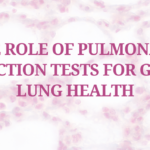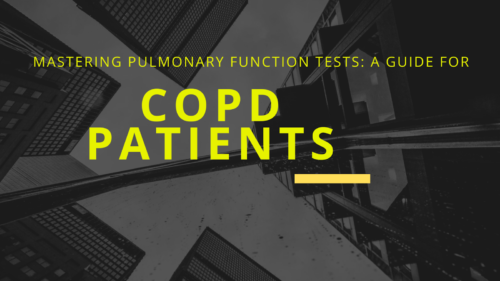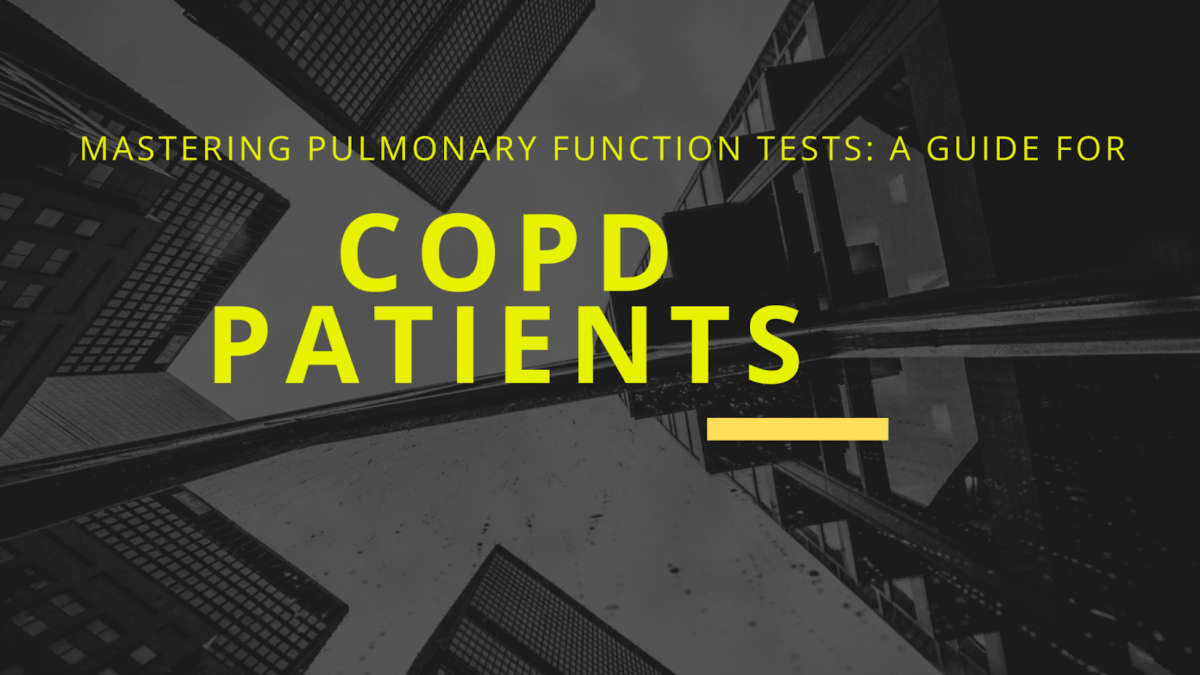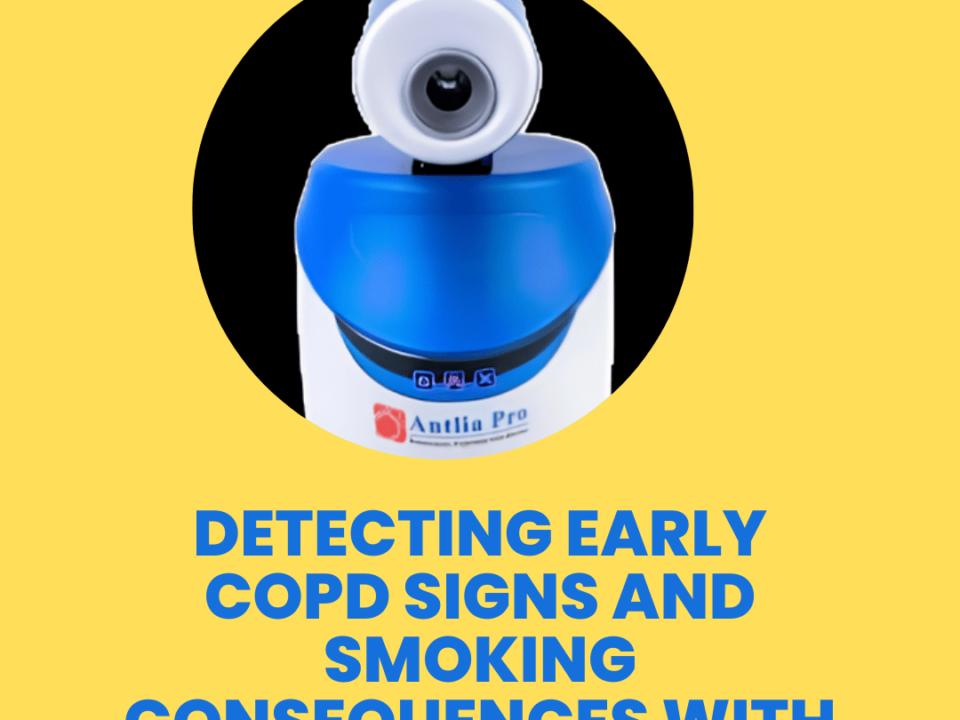
The Future of Pulmonary Diagnosis: Streamlining Healthcare with Advanced Pulmonary Diagnostic Machines
July 27, 2024
The Role of Pulmonary Function Tests for Good Lung Health
August 1, 2024
How important PFT test with respiratory oscillometry for COPD Patient.
Are you a COPD patient who struggles to breathe? Do you feel like your daily duties are becoming more difficult? You are not alone. Millions of people worldwide are dealing with the daily realities of chronic obstructive pulmonary disorder (COPD). But there is hope. Understanding your disease is the first step toward managing it properly. This is where pulmonary function test devices with Respiratory Oscillometry come in.
PFTs are a set of tests performed to measure lung function. PFTs can guide treatment decisions by measuring parameters like lung capacity, airflow, and gas exchange.
In this blog, we will explore the various PFTs, including spirometry and lung diffusion capacity tests, that are frequently performed on COPD patients. We'll go over the measurements taken, the methodology used, and the conclusions drawn from the testing. Furthermore, we will go over how PFTs can assist your healthcare professional in determining the severity of your COPD and developing a specific treatment strategy for you.
Empower yourself with knowledge and take charge of your respiratory health. Continue reading to learn how pulmonary function tests can help you better manage your COPD and enhance your quality of life.
Understanding COPD (chronic obstructive pulmonary disease)

Understanding COPD the need of Hour
Chronic Obstructive Pulmonary Disease (COPD) is a progressive lung condition that makes it increasingly difficult to breathe. Consider Sarah, a previously lively and athletic woman in her late fifties who enjoyed spending time outside and hiking with her family. Over time, she noticed a progressive reduction in her energy levels, as well as a persistent cough that refused to go away.
She originally attributed these symptoms to aging, but as they worsened, she found it difficult to keep up with her grandchildren.
Through Sarah's narrative, you can learn about the early stages of COPD, the often-overlooked symptoms, and the emotional toll it has on patients and families. Following Sarah's journey allows readers to have a better knowledge of the condition and the significance of early detection and intervention.
Importance of pulmonary function tests for COPD patients
The PFT Machine is essential for COPD therapy. These non-invasive diagnostic instruments help healthcare providers understand the overall health and function of a patient's respiratory system.
PFTs can help diagnose COPD, evaluate its severity, and track its progression over time by monitoring a variety of factors, such as lung capacity, airflow, and gas exchange.
PFTs are very significant for COPD patients since they serve as the foundation for the condition's clinical assessment and therapy.
The results of these tests can assist healthcare providers in making informed judgments about the best treatment techniques, such as bronchodilators, anti-inflammatory medicines, and oxygen therapy. Furthermore, PFTs can assist in identifying any underlying respiratory problems that may exist.
Regular PFTs might also give COPD patients the confidence to participate more actively in their care. Patients who understand their lung function and how it develops over time can collaborate with their healthcare team to set realistic goals, track their progress, and make informed treatment decisions. This level of involvement can result in higher adherence to recommended medicines and better overall outcomes for COPD patients.
Impulse oscillometry (IOS) is also a non-invasive technique used to measure the mechanical properties of the respiratory system, particularly airway impedance, by analyzing the response to oscillatory pressure waves. This method is increasingly employed in the assessment of various respiratory conditions, including obstructive airway diseases like bronchiectasis and chronic obstructive pulmonary disease (COPD)
Types of pulmonary function tests for COPD diagnosis
When diagnosing and treating COPD, healthcare providers may use a range of pulmonary function tests. The most widely used PFTs for COPD patients are:
- Spirometry
The most commonly used PFT is the gold standard for diagnosing and monitoring COPD. Spirometry monitors the volume and flow of air when the patient inhales and exhales, revealing important information regarding lung capacity and airflow limits.
- Antlia Pro (PFT) Device by ICaltech

PFT Test machine antlia pro for COPD patients
This portable and user-friendly technology allows healthcare providers and patients to easily measure lung function. The Antlia- Pro Pft test is ideal for all patients who must undergo pulmonary function tests, especially the weak, elderly, and young. Antlia-based lung test is simple and requires only passive cooperation with no forced expiratory maneuvers.
- Lung diffusion capacity test (DLCO)
This test evaluates the lungs' ability to move oxygen from the air into the bloodstream. It is especially beneficial for detecting any abnormalities in the lungs' gas exchange function, which can be a sign of COPD.
- Plethysmography
This test determines the entire volume of air in the lungs, including residual volume (the amount of air remaining after a complete exhale). Plethysmography can help distinguish between different kinds of lung illnesses.
- Oscillometry
A recent technique for measuring the resistance and reactance of your respiratory system. It adds to regular PFTs by providing further information regarding lung function.
By combining these PFTs, healthcare clinicians can gain a thorough view of a COPD patient's respiratory health, which is critical for designing an effective treatment strategy and tracking disease progression over time.
Tips for preparing for a pulmonary function test
Preparing for a pulmonary function test (PFT) can help assure accurate and consistent findings, which are critical for effective COPD management. Here are some suggestions to keep in mind:
- Avoid smoking and bronchodilators: It is recommended that you refrain from smoking and using any bronchodilator drugs (such as inhalers) for at least 4-6 hours before the test. This ensures that the results are not impacted by the drugs' immediate effects.
- Wear loose, comfortable clothing that will not limit your breathing or movement during the test. Avoid wearing shirts or belts that are too tight to allow you to breathe deeply.
- Avoid vigorous exercise, big meals, and alcohol for at least 30 minutes before the test. These activities can impair your breathing and distort the test results.
- Inform your healthcare practitioner. Make sure you tell the healthcare person performing the PFT about any respiratory issues, drugs, or recent illnesses you may have. This information can assist them in better comprehending the test results.
- Understand the testing technique: Request that the healthcare provider describe the testing procedure in full, including how you will be asked to breathe during the test. This can make you feel more prepared and relaxed during the PFT.
By following these instructions, you may guarantee that your pulmonary function test delivers the most accurate and dependable information to help you manage your COPD.
How to improve pulmonary function for COPD patients
Improving pulmonary function is a critical component of controlling COPD and improving the overall quality of life for patients. While COPD is a chronic and progressive condition, there are numerous strategies available to help COPD patients improve their lung function and slow the loss of their respiratory health.
- Adherence to Medication Regimen: Proper use of prescribed drugs, such as bronchodilators and inhaled corticosteroids, can help reduce inflammation, increase airflow, and relieve COPD symptoms. Consistent adherence to the treatment regimen is critical for maintaining and even increasing lung function.
- Participation in a comprehensive pulmonary rehabilitation program can significantly improve lung function for COPD patients. These programs usually incorporate exercise training, education, and psychosocial support, which might help improve respiratory muscle strength, increase exercise tolerance, and enhance overall lung function.
- Smoking Cessation: Giving up smoking is one of the most effective treatments for COPD patients to enhance their lung function and halt the disease's development. Healthcare providers can help patients quit smoking using a variety of treatments, including counseling, nicotine replacement therapy, and medication-assisted treatment
- Oxygen Therapy: Supplemental oxygen therapy helps raise blood oxygen levels in COPD patients with severe lung function impairment, which lessens the burden on the respiratory system and may even enhance lung function overall.
- Airway Clearance Techniques: Chest physiotherapy, postural drainage, and the use of handheld devices can all help COPD patients clear mucus from their airways, increasing lung function and lowering the risk of respiratory infections.
Patients who incorporate these techniques into their COPD management plan can work toward increasing their lung function, more effectively controlling their symptoms, and improving their overall quality of life.
Conclusion: The role of pulmonary function tests in managing COPD
Pulmonary function tests (PFTs) are critical tools in the treatment of chronic obstructive pulmonary disease (COPD). These non-invasive diagnostic tests give healthcare clinicians significant information about the general health and function of a patient's respiratory system, allowing for more informed decision-making and individualized treatment strategies.
The future of pulmonary diagnosis is essential for COPD patients' diagnosis, monitoring, and management. PFTs, which measure characteristics such as lung capacity, airflow, and gas exchange, can assist healthcare providers in determining the severity of a patient's COPD, identifying any underlying respiratory disorders, and tracking the disease's development over time.
Ultimately, mastering pulmonary function testing is an important step toward efficient COPD management. COPD patients can enhance their quality of life and take control of their respiratory health by knowing the significance of these tests and actively participating in the testing procedure.




